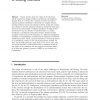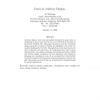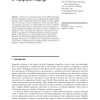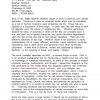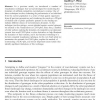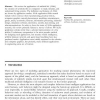ALIFE
2006
14 years 20 days ago
2006
Cancer can be viewed as the loss of cooperative cell behaviors that normally facilitate multicellularity, including the formation of tissues and organs. Hanahan and Weinberg descri...
ALIFE
2006
14 years 20 days ago
2006
Current theories about the origin of the eukaryotic cell all assume that during evolution a prokaryotic cell acquired a nucleus. Here, it is shown that a scenario in which the nucl...
ALIFE
2006
14 years 20 days ago
2006
Auditory displays have been successfully developed to assist data visualization in many areas, but have as yet received little attention in the field of Artificial Life. This pape...
ALIFE
2006
14 years 20 days ago
2006
We show how cultural selection for learnability during the process of linguistic evolution can be visualized using a simple iterated learning model. Computational models of linguis...
ALIFE
2006
14 years 20 days ago
2006
Visualization has an increasingly important role to play in scientific research. Moreover, visualization has a special role to play within artificial life as a result of the inform...
ALIFE
2006
14 years 20 days ago
2006
The body-brain coevolution of aerial life forms has not been developed as far as aquatic or terrestrial locomotion in the field of artificial life. We are studying physically simu...
ALIFE
2006
14 years 20 days ago
2006
ALIFE
2006
14 years 20 days ago
2006
In a previous article, we introduced a number of visualization techniques that we had developed for monitoring the dynamics of artificial competitive coevolutionary systems. One of...
ALIFE
2006
14 years 20 days ago
2006
We review the applications of artificial life (ALife), the creation of synthetic life on computers to study, simulate, and understand living systems. The definition and features of...
ALIFE
2006
14 years 20 days ago
2006
Evolutionary theorists have long been interested in the conditions that permit the evolution of altruistic cooperation. Recent work has demonstrated that altruistic donation can ev...

